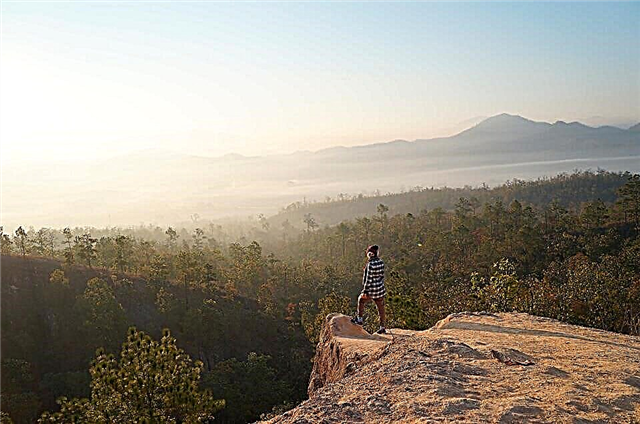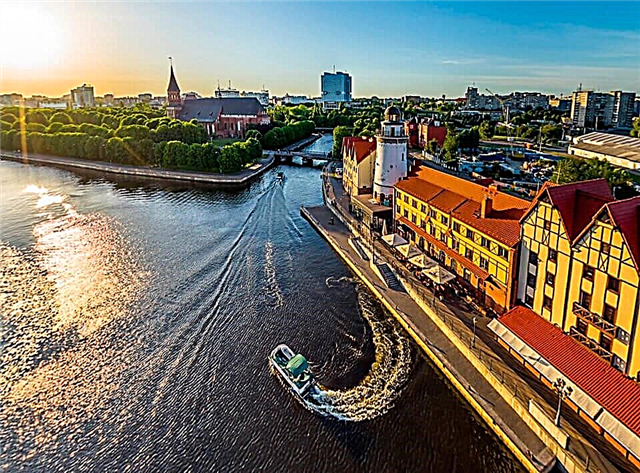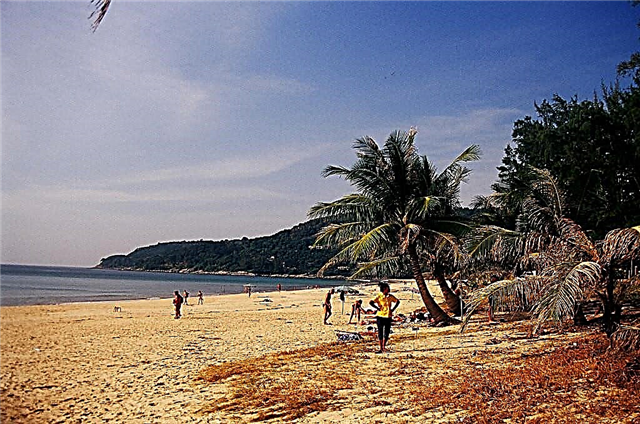Tourists from all countries strive to see the symbol of the monarchy of France, left as a legacy to the descendants of Louis XIV, called the "sun king" of the ancient country. His character traits made it possible to create a special royal world living according to certain laws among the extraordinary luxury and beauty. In the created world were not only the families of the royal dynasties of France, but also the great names participating in the political events of the country for several centuries. Important moments in history taking place within the walls of the Palace of Versailles in Paris have forever included it in the UNESCO World Heritage List as a symbol of the greatness of the crown of France.
Construction history

The special combination of the palace buildings with the surrounding park has become a symbol of beauty and imitation. In his image, the great Peter I, for example, created "little Versailles" in Peterhof. There is a version that the birth of the famous landmark is associated with the ambitions of Louis XIV, who jealously perceived the existence of the castle of Vaud - le - Vicomte, which belonged to the famous finance minister Foucault. The ambitious twenty-year-old king needed to create a special palace for entertainment.
In 1623, he proposed to build the future ensemble on the site of a small hunting castle, measuring 24 by 6 meters, built by Louis XIII. Now on the site of a building made of bricks, slate, and stone there is a gorgeous Marble Palace. The extraordinary architectural complex passed on to many dynasties of monarchs who brought their own features into its modern look. The life of the kings Philip V (the founder of the Spanish line of Bourbons), Louis XV (a wasteful despot ruled by the Marquis de Pompadour) was connected with the family nest.

The first Constitutional monarch Louis XVI, who ended his life on the scaffold, a supporter of many liberal reforms of Louis XVIII, a fighter for the establishment of an absolute monarchy, Charles X. The palace was considered the official residence of the French monarchs from 1682 to 1789. The methods of government of the owners of the residence formed the authority of the center of the political life of Versailles, confirming the role of the palace as a symbol of the greatness of the crown of France.
Famous architects, artists, park designers were involved at all stages of the construction of the complex. The first great masters were in 1662 the artist Charles Lebrun, architects André Le Nôtre, Louis Leveaux. The following stages are considered to be the defining historical milestones in the construction of the ensemble:
- Initial period. It is associated with the expansion, renovation of the buildings of the hunting castle.
- Second phase. It is associated with the thirtieth anniversary of Louis XVI. Having surrounded the old castle with buildings in the form of a protective shell, we received a U-shaped structure from two main courtyards (Marble, Royal). They hosted theatrical performances, for example, the premiere of Moliere's "Misanthrope".
- The third stage of construction was dedicated to the fortieth anniversary of the majestic person. It was a quick construction period under the direction of Arduin Mansart.
- Obtaining the title of a museum. The Palace was opened to the public in 1801. Since 1830, the entire architectural complex has been included in it. Since 1837, the Museum of the History of the State began to operate here.
- Creation of the historic birthplace of important international documents. This happened for the first time in the 18th century with the adoption of the famous Declaration of the Rights of Man, Citizen (1789). Signing of documents confirming the creation of the German Empire after the end of the Franco-Prussian War of 1871, a peace treaty after the end of the World War. Since that time, the famous political system of Versailles began to operate, governing the procedure of international relations. The palace became for the country a place of reconciliation for the participants of the Second World War.
- The modern legal status was assigned to the palace in 1995. A special "Institution of the National Museum, Property of Versailles" was formed. Having survived devastation, robberies, several restoration options, the unique complex has become a symbol of the country, its eternal attraction. Since 2001, the ensemble has entered the Association of European Imperial Residences.
King's palace

In order for the palace to appear, it was necessary to drain the swamps, transplant natural forests in the proper place, create conditions for the residence of 6,000 thousand courtiers, important subjects. Their life, deeds had to proceed according to unchanging laws, pleasing to the ruling kings. The absolute power of Louis XIV was demonstrated by the grandiose size of the palace, wealth, and lavish entertainment. During the construction, about 30,000 workers were used, almost 10 tons of silver were spent (based on current money, this corresponds to 37 billion euros).
Until now, the Museum has all the accounts of expenses spent during the construction. Living conditions were difficult in the palace: there was no heating, toilets, and water. None of the subjects could make a decision to leave the palace. At the same time, he was deprived of ranks, privileges. In the main building of the palace there are bedrooms, halls, which are distinguished by luxury. Each piece of the premises is decorated with unique marble and wood carvings.

The walls are decorated with frescoes, velvet drapery, paintings, silk carpets. Tinted glass, sculptures, and gilded bronze items skillfully fill all the corners of the premises. The palace was erected in a harmonious combination with the surrounding area, other buildings on a huge territory. He became a model of integrity, beauty of architectural structures in the country residences of kings.
Description of the palace
There is a unique palace and park complex not far from Paris, at a distance of about 20 km. The elements of the ensemble occupy an area of 800 hectares. The palace has 700 rooms, is decorated with 2000 windows, 67 staircases. The halls are equipped with 1,300 fireplaces and 5,000 pieces of furniture. The palace is known for its libraries, an oval hall lit by 10,000 candles, theater, opera. A special way of supplying water from the Seine River allows 50 fountains to work in the park. The list of French cultural heritage associated with the Palace of Versailles includes about 16,000 prints, 6,500 paintings, over 2,000 sculptures.
Each part of the building has a separate entrance, paid separately and located behind the Marble Palace next to the equestrian statue of Louis XIV. Entering the complex through entrance A (opposite the right side of the chapel), you find yourself in the main rooms. This is the Official Apartment, Mirror Gallery. The easiest way to get to the Royal Bedchamber is through Entrance C, located at the back of the courtyard.
Most of the excursions that cover the entire palace go through entrance D. On the opposite side of the garden, there are two small palaces that complement the overall ensemble. These are the Pink Marble and the Grand Trianon. They served for relaxation, solitude, romantic meetings of the court nobility.
In one of them, the king's dinners were held, whose food was prepared by about 2,000 kitchen workers. The small palace served as the love nest of the king and Madame du Barry. Later, Maria Antoinneta became the owner of the small Trianon. At her request, an unusual village with an artificial lake, a mill, houses with thatched roofs arose near the palace. These were realized fantasies of a quiet peasant life. The huge expenses of Maria Antoinette led to the devastation of the treasury, the fall of the greatness of the monarchy of kings in 1789.
Halls

It is best to walk through the permitted parts of the palace together with an excursion, having independently determined the route. At the same time, it is possible to order audio guide services. It is impossible to enter many halls and salons of the palace without a guide.The main route of excursions must pass through the Royal Chapel, a majestic white and gold building, made in the Baroque style. Here in 1770 the wedding of the king with Marie Antoinette took place.

A long chain of gilded living rooms leads to the main Throne Room and the Mirror Gallery. On its vaulted ceiling are paintings by Charles Lebrun. They depict the great deeds of Louis XIV. Among the 70 m long golden walls and 17 mirrors with lamps in the form of golden sculptures in the gallery, many political affairs were decided. The Treaty of Versailles was signed here.

In the northern part of the palace are the queen's chambers, including her bedchamber. The last restoration of the chambers completely preserved their appearance from the period of 1787. Having finished inspecting the chambers, you can see the War Salon, where paintings describing the military victories of the empire are placed on the walls. The famous Salon of Hercules is located on the second floor of the palace. It is considered the first salon of the Great Royal Apartments and connects them with the northern part of the building, the palace chapel. During the life of Louis XIV, the room was used as a ballroom.

During the reign of Louis XVI, the salon was used to receive diplomats and embassies of different states. The hall is famous for the three-dimensional depiction of the scene of the Ascension on the plafond. Hercules opens the entrance to Olympus or immortality. The painting occupies 230 sq. M. It depicts the figures of 123 characters. King Louis XIV was fond of works of art. He inherited 1,500 paintings, increasing their number to 2,300 pieces. over the years of government. Therefore, in many rooms of the palace, conditions were created for the placement of interesting expositions of elements of sculpture, graphics, painting.
The park

The park surroundings of the buildings, emphasizing the beauty of the palace, were created by the genius of landscape design André Le Nôtrome. The structure of the palace park is the standard of French classicism of park art. Many monarchs of England, Italy, Germany, Russia could not surpass the beauty of the park. The distinctive elements of the park are the following devices:
- The water channel is about 1.6 km long. The western orientation of the channel creates conditions for an unusually beautiful reflection of the setting sun. You can admire it from the palace.
- Paths, flower beds, ponds, lakes, arranged in a strict geometric order. Over 3,000 thousand rare shrubs and trees were annually brought into the greenhouse of Versailles for the winter. The total number of trees growing in the park reaches 200,000 units. Around 220,000 seedlings are planted in flower beds every year.
- Fountains. Their 1,400 different forms of structures are distinguished by the masterpieces in the form of the chariot of Apollo and the fountain depicting a monument to the glory of the Sun King.
- Groves planted on the sides of the alleys. Once upon a time elegant courtiers danced among them.
- Statues in marble, bronze, standing along the paths.
Among the bright alleys, rumbling fountains, fireworks, masquerades, performances, entertainment festivals of kings took place on an area of 100 hectares of a unique park.
Other attractions
For almost a century, the city of Versailles served as the capital. During the period when the problems of diplomacy and history were being solved in the luxurious royal palace, the structure of the city was formed. Priceless sights that have survived now appeared in it. A quiet bourgeois town has a well-developed infrastructure that provides excellent opportunities for recreation and travel. Among the main attractions of the city are the Lambinet Museum, Saint-Louis Cathedral, Madame Elizabeth's Palace, Chevrelu Arboretum, and others.
Opening hours and ticket prices
The palace is ready to welcome guests from April to October from 9 am to 6.30 pm. Ticket offices end customer service at 17.50. Day off on Monday. The entrance ticket price is 15 € for adults, 13 € for students, schoolchildren. In winter, on the first Sundays of the months, you can visit the museum without paying for the entrance ticket.
There is a single ticket (worth 18 €) that allows you to visit the main Palace, two small palaces. During the period of mass holidays, fountains, the ticket price increases, becoming equal to 25 €. If you want to spend the whole day in the ensemble, it is advantageous to buy a complex ticket, at the price of 21.75 €, which includes travel, inspection of palaces and a park.
How to get there
Just come to the palace by the RER train, following line C. You need to get off at the Versailles-Rive Gauche stop. Travel time is about 40 minutes, the fare is 3 €. The distance from the station is covered on foot in 5 minutes.











